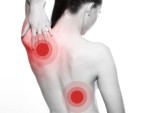



Piles are hemorrhoids that become inflamed. Hemorrhoids are masses, clumps, cushions of tissue in the anal canal - they are full of blood vessels, support tissue, muscle and elastic fibers.
Although hemorrhoids are
thought of as unpleasant inflammations, we all have them. It is
when the hemorrhoidal cushions become too big (inflamed) that
problems occur - when this happens they are called piles or
pathological hemorrhoids.
Put simply, "piles" are the swollen ones that are painful and cause
problems, hemorrhoids can refer to the swollen ones (pathological
hemorrhoids) or simply the normal structure. However, in most cases
these days, the words piles and hemorrhoids are nearly always used
interchangeably.
Piles can be of various sizes and may be
internal (inside the anus) or external ones (outside the anus).
Typically, internal piles occur from 2 to 4cm above the opening of
the anus. External piles (perianal hematoma) occur on the outside
edge of the anus. The internal ones are much more common.
Males and females are equally susceptible to developing troublesome
hemorrhoids.
In the vast majority of cases, piles are effectively treated with
OTC medications, a good fluid intake, and by following a diet high
in fiber. In severe cases the piles may have to be surgically
removed. Approximately 10% of patients who go and see their doctor
about piles eventually require surgical intervention.
According to Medilexicon's
Hemorrhoids are "A varicose condition of the external hemorrhoidal veins causing painful swellings at the anus."
Internal Hemorrhoids are "Dilated veins beneath the mucous membrane within the sphincter."
External Hemorrhoids are "dilated veins forming tumors at the outer side of the external sphincter."
What are the signs and symptoms of piles?
A symptom is something the patient feels and describes, such as a pain, while a sign is something everybody can see, such as a rash.
In most cases piles are not serious and go away on their own
after a few days. In fact, a considerable number of people with
hemorrhoids do not experience any symptoms and do not even know
they have them.
An individual with piles may experience the following symptoms:
Internal hemorrhoids - they are classified into four grades:
External hemorrhoids - called perianal hematoma. These are small lumps that are located on the outside edge of the anus. They are extremely itchy and can be painful if a blood clot forms inside (thrombosed external hemorrhoid). Thrombosed external hemorrhoid requires medical treatment straight away.
BEAUTY CARE
JOINT PAIN
EPILEPSY